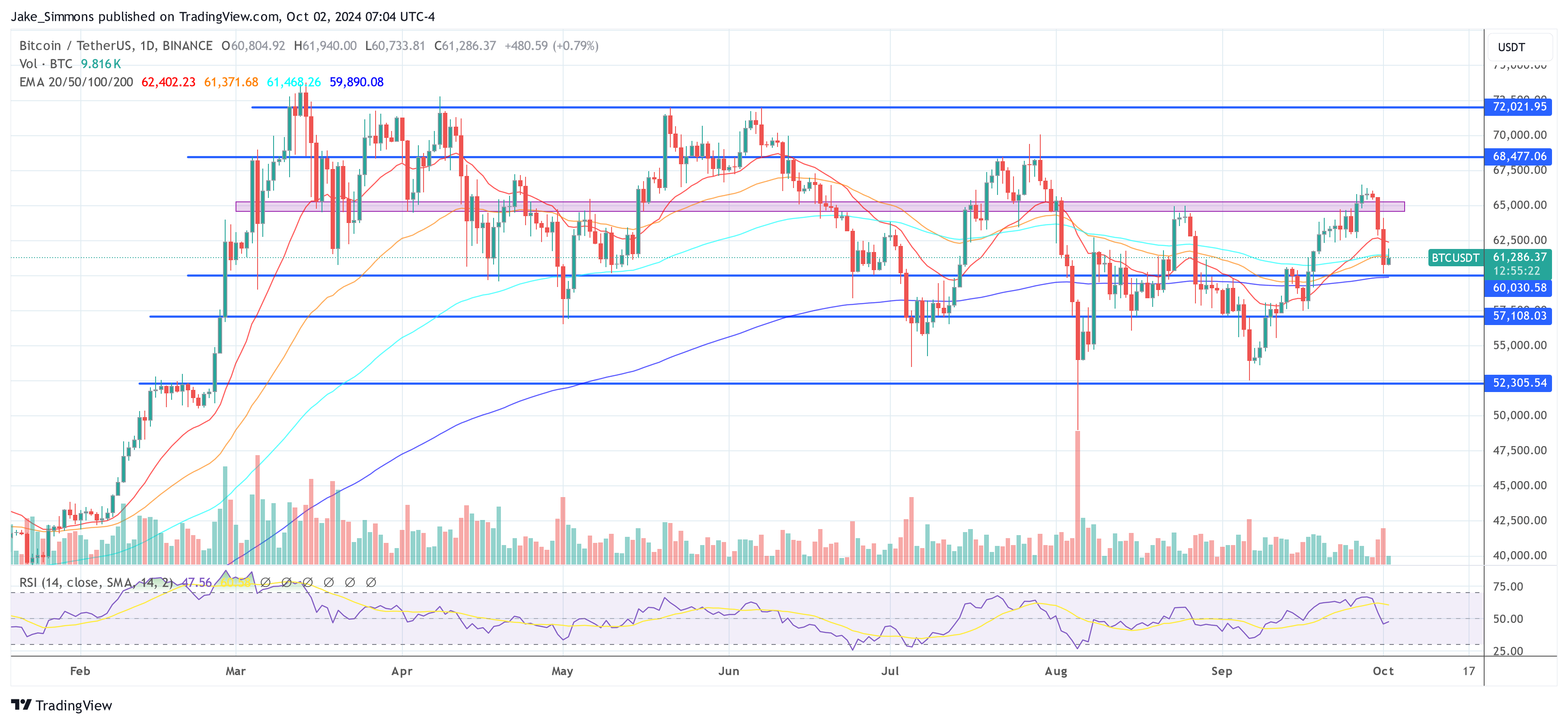This article is available in Spanish.
Bitcoin prices fell sharply to $60,164 on Tuesday due to heightened geopolitical tensions in the Middle East, with Iran launching missile attacks on Israel. The escalation roiled global markets, impacting both traditional and crypto assets. Bitcoin was not immune with a notable decline of -4%.
Market participants, who had expected a strong bullish trend for the month dubbed ‘Uptober’, were forced to reassess as broader market sentiment turned the risk off. However, according to several analysts, the reaction to the geopolitical news may be exaggerated.
Will Bitcoin Fall Further?
Macro strategist Alex Krüger (@krugermacro) warns of the sudden shift in market sentiment. Through X, he writes“It was bizarre to see how everyone became absolutely exuberant and shouted for ‘Uptober’. From doom to gloom, in the blink of an eye […] Despite the conflict in the Middle East, this is an election year in the US. There is great uncertainty ahead.”
Related reading
Krüger highlights the volatility typically seen in financial markets during U.S. election years, noting: “In election years, the month of October is correspondingly the most volatile, and stocks historically show slightly negative returns.” He also added that speculative markets tend to react to uncertainties, and given the proximity to the election and upcoming payroll data on Friday, further volatility can be expected.
“If the payroll numbers are very strong next Friday, obviously stocks will tear because we are in a ‘good news is good news’ regime. But the time to keep up the pressure is after the elections, possibly from election night itself,” says Krüger.
Prominent crypto analyst CRG (@MacroCRG) notes the potential for a Bitcoin price recovery despite temporary market turbulence. “That could be the quarterly low for boys. Markets love to set highs and lows early in the candle. Moreover, geopolitical movements tend to fade away. Depending on Israel’s response, we may still see some turbulence, but the market is likely anticipating this.”
Like Krüger, he outlines that greater market liquidity could provide support for Bitcoin, stating: “Liquidity will start to rise from here on out, which BTC should spot immediately.” Overall, CRG remains optimistic about Bitcoin’s long-term trajectory, claiming that despite near-term uncertainties, “$100,000 BTC is coming.”
Related reading
Singapore-based trading firm QCP Capital also provides its views on the impact of the conflict. In their newest investor remarkthe company writes: “The Israeli-Iranian conflict has intensified, with more than 180 missiles launched by Iran. Nevertheless, the reaction in traditional financial markets has been relatively muted. The S&P closed just 1% lower, while crude oil (WTI) rose 2%.”
However, the crypto market saw a sharper decline, with Bitcoin facing heavier selling pressure. “BTC closed 4% lower while support remained around the $60k level. A further escalation of the conflict could potentially push BTC towards the $55,000 mark,” QCP notes.
Despite the immediate impact, QCP Capital’s report also highlights that the broader economic environment remains favorable to risky investments over the medium term. “Middle East geopolitics will take center stage for now, but the superficial sell-off suggests the market remains good at bidding for risky assets. This small setback should not distract from the bigger picture.”
They also point to global monetary policy as an important factor. “The liquidity flow from the PBoC and potential fiscal support are likely to support asset prices in China, with bullish sentiment potentially spilling over globally to support risky assets including crypto. […] Asset prices are expected to remain supported into 2025 as both the world’s largest (Fed) and third largest (PBoC) central banks have begun their austerity cycles in earnest,” QCP concludes.
At the time of writing, BTC was trading at $61,286.

Featured image created with DALL.E, chart from TradingView.com

